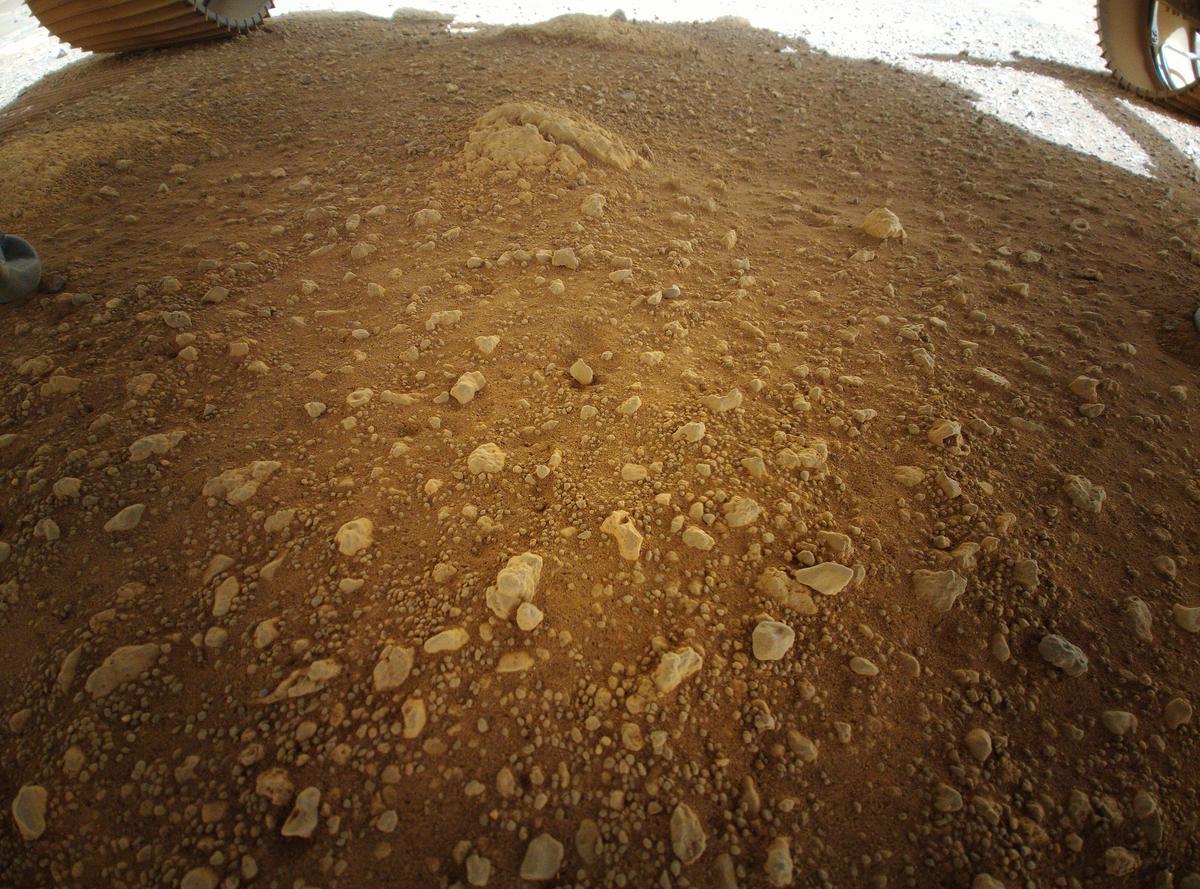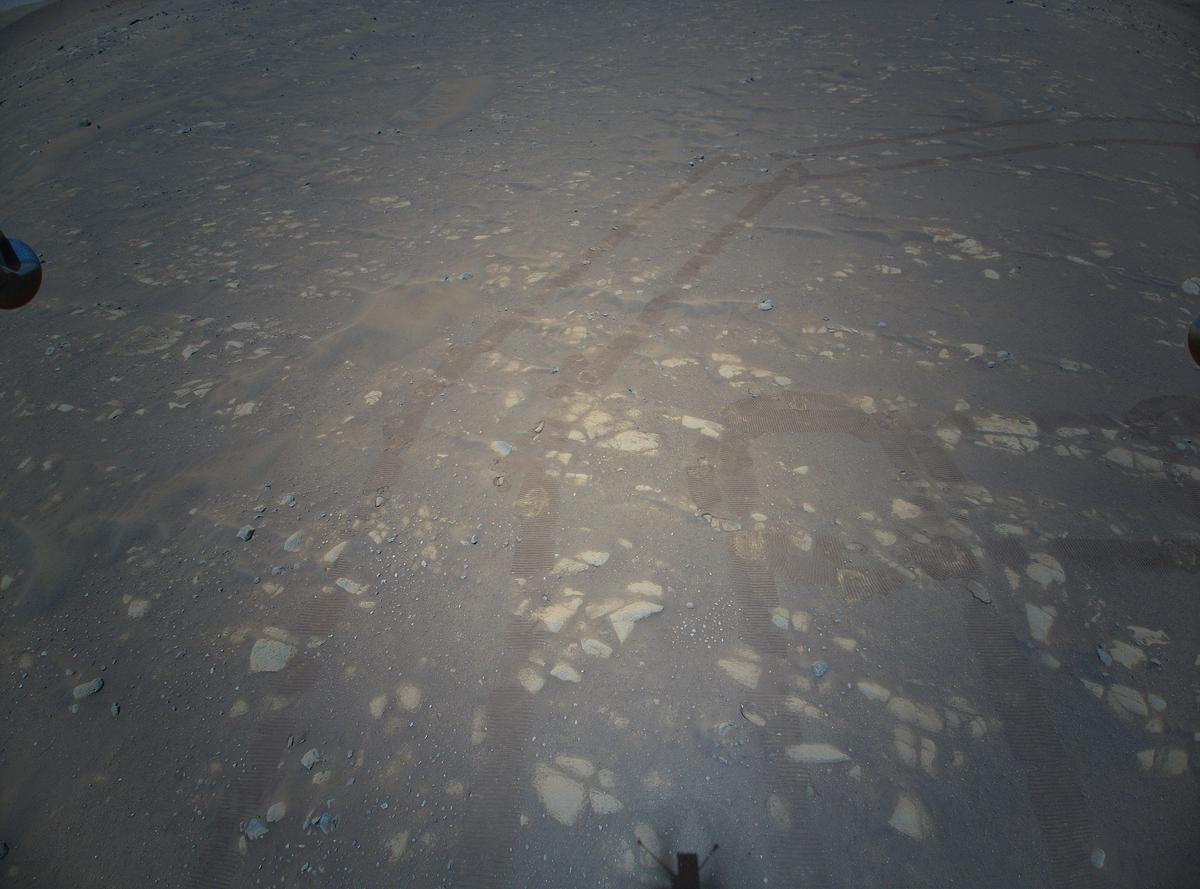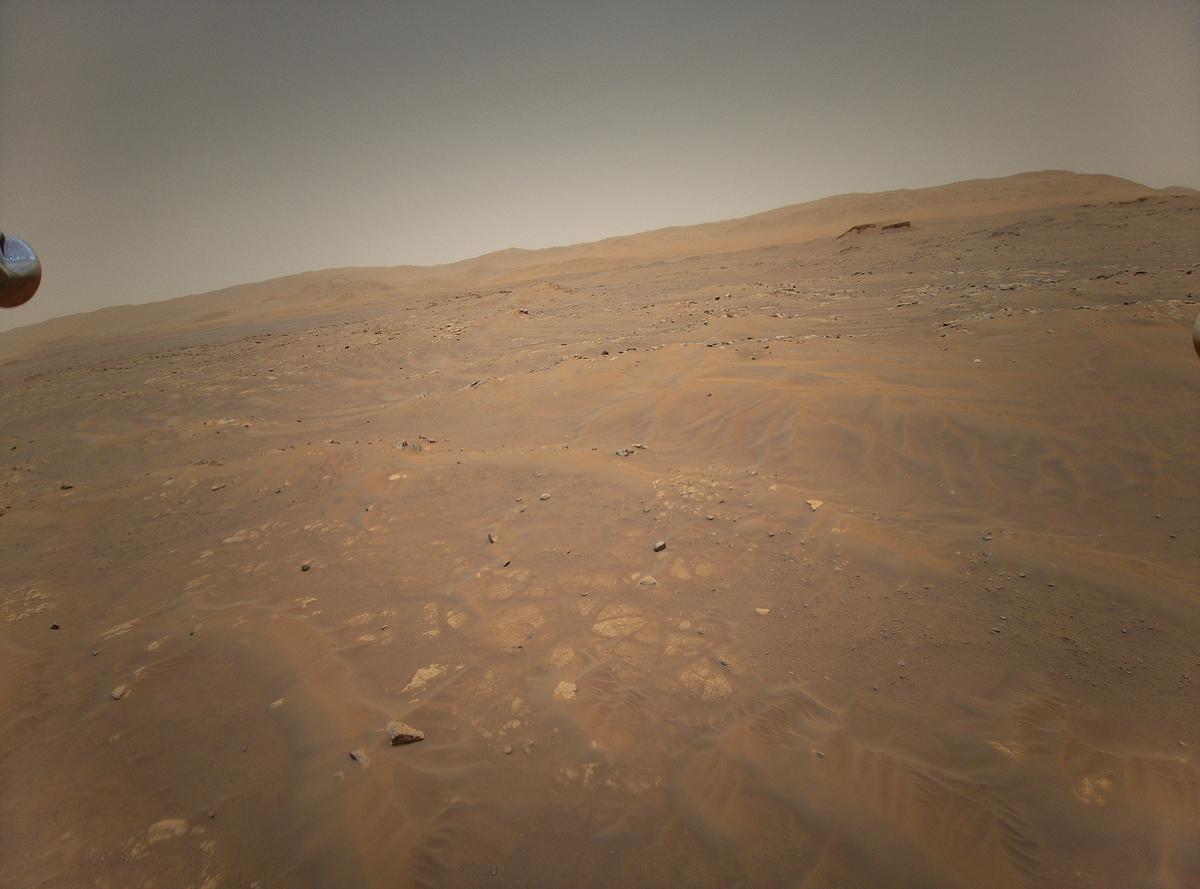Saw the Nova special on the Mars rover last night. Mind blowing the tech they packed into this thing.
Sent from my iPhone using TGR Forums
Results 351 to 372 of 372
Thread: New Mars Cameras
-
04-19-2021, 04:14 PM #351
-
04-22-2021, 01:10 AM #352
 Banned
Banned
- Join Date
- Nov 2017
- Posts
- 85
I could see in their faces how proud they are. Damn!
-
04-30-2021, 06:21 AM #353
 Registered User
Registered User
- Join Date
- Apr 2021
- Posts
- 7
nice
-
05-05-2021, 11:52 AM #354
MSL MCAM 360...can pan in youtube:
https://www.youtube.com/watch?v=IX6LEAqUx-E
-
05-05-2021, 01:28 PM #355
-
05-07-2021, 09:54 PM #356
-
05-16-2021, 10:23 PM #357
It's worth checking out the link to see how they plan on ripping off part of the old rover's wheels to keep it running. Seems like a cool project to work on.
https://spectrum.ieee.org/automaton/...to-stay-mobileBut while the new kids on the block are getting all the attention, spare a thought for the reliable old warhorse which has been plying Gale Crater for the better part of a decade now — Curiosity. NASA has been driving the compact-car-sized rover around Mars for a long time now, long enough to rack up some pretty severe damage to its six highly engineered wheels, thanks to the brutal Martian rocks. But if you think Curiosity will get sidelined as its wheels degrade, think again — the rover’s operators have a plan to continue surface operations that includes ripping off its own wheels if necessary. It’s a complex operation that would require positioning the wheel over a suitable rock and twisting with the steering motor to peel off the outer section of the wheel, leaving a rim to drive around on. JPL has already practiced it, but they predict it won’t be necessary until 2034 or so. Now that’s thinking ahead.
-
05-29-2021, 06:11 PM #358
I don't have much to do with the heli and they used cots cameras, but cool to see the images from flight. They are all on the public page now, so if you are interested:
https://mars.nasa.gov/mars2020/multi...RTE#raw-images
Ones I liked:




-
07-18-2021, 01:53 PM #359
Kind of crazy the helicopter is still going and how routine it has become.
In other news, few weeks ago our camera on JUNO captured some awesome photos of Ganymede. I'm a huge fan of the Galilean moons and started this science payload operations "career" involved in the imaging during the final Galileo spacecraft flyby of Ganymede...~20 years ago, the last time imaged at a good resolution.
NASA/JPL-Caltech/SwRI/MSSS/Björn Jónsson
Cool video of the flyby made with images from JUNO Cam:
-
07-18-2021, 05:49 PM #360
^awesome and worth the watch! What a wild timelapse with Juno's crazy orbit!
That we are regularly operating a rotorcraft on another planet is mindblowing.
I really wish they had done the Jupiter Icy Moon Orbiter it would have been a breakthrough in so many regards.
Still ESA JUICE will launch next year and NASA Europa Clipper will launch in 2024
Also three cheers for getting Hubble Fixed Originally Posted by blurred
Originally Posted by blurred
-
07-19-2021, 01:29 PM #361
-
07-19-2021, 02:23 PM #362
I'd actually argue Calisto and Ganymede might be more interesting than much smaller Europa and tiny little Enceladus for seeking life-as-we-know-it...
Titan must be explored further because it is the best candidate for life-as-we-don't-know-it. UAV and robosub missions will be next-level-cool, and far less of an engineering feat than nuclear icemelt drilling missions to drop a tethered ROV sub into the subsurface oceans of the icy moons.
Ganymede, Titan, and Calisto are the 3 most massive bodies in the solar system after the 8 major planets.
I am curious about shallow water deposits on Mars as evidenced by recent MRO images, but the perchlorate problem in Martian soil is discouraging for life-as-we-know-it. Originally Posted by blurred
Originally Posted by blurred
-
07-19-2021, 02:57 PM #363
My understanding with Ganymede and Callisto is that, unlike Europa and Enceladus, their subsurface oceans are separated from the rocky core by another layer of ice (https://en.wikipedia.org/wiki/Callis...to_diagram.svg ; https://en.wikipedia.org/wiki/Ganyme...de_diagram.svg). Without rock in contact with water life seems a lot less likely. There's also strong evidence for active hydrothermal vents on Europa and Enceladus.
UAV and robosub missions on Titan must happen and will be rad as hell. But, I do wonder whether the chemistry of even ultra-exotic life can proceed in liquid methane at -290* F. Titan has a subsurface liquid water ocean, but like Ganymede and Callisto it's sandwiched between ice layers and not in contact with the mineral core (https://en.wikipedia.org/wiki/Titan_...tan_poster.svg).
I'm not talking about shallow groundwater on Mars that creates the RSLs we can see in MRO images. I'm talking about deep groundwater, thousands of feet down. Hot wet rock 10,000 feet down in old South African gold mines is teeming with life (https://www.cbsnews.com/news/looking...es-2020-02-09/). If life evolved on Mars it may have colonized similar deep geological zones and wouldn't have given a single shit that the surface oceans evaporated billions of years ago.
-
07-19-2021, 03:22 PM #364
^all great points
 Originally Posted by blurred
Originally Posted by blurred
-
09-19-2021, 08:25 PM #365
Looks like it's getting harder to fly due to seasonal changes in the air density on Mars. It's so cool that is still flying.
Martian helicopter update:
https://mars.nasa.gov/technology/hel...er-and-harder/In the months since we flew for the first time, we have learned a great deal about operating a helicopter on Mars. We have explored Ingenuity’s strengths and limitations in detail, leveraging the former and working around the latter to operationalize it as a highly capable reconnaissance platform.
With the benefit of the knowledge acquired, conducting flights on Mars has in most ways become easier than it was at the outset. But in one important way it is actually getting more difficult every day: I’m talking about the atmospheric density, which was already extremely low and is now dropping further due to seasonal variations on Mars.
When we designed and tested Ingenuity on Earth, we expected Ingenuity’s five-flight mission to be completed within the first few months after Perseverance’s landing in February 2021. We therefore prepared for flights at atmospheric densities between 0.0145 and 0.0185 kg/m3, which is equivalent to 1.2-1.5% of Earth’s atmospheric density at sea level. With Ingenuity in its sixth month of operation, however, we have entered a season where the densities in Jezero Crater are dropping to even lower levels. In the coming months we may see densities as low as 0.012 kg/m3 (1.0% of Earth’s density) during the afternoon hours that are preferable for flight.
The difference may seem small, but it has a significant impact on Ingenuity’s ability to fly. At our lower design limit for atmospheric density (0.0145 kg/m3), we know that Ingenuity has a thrust margin of at least 30%. Thrust margin refers to the excess thrust that Ingenuity can produce above and beyond what is required to hover. That additional thrust is needed on takeoffs and climbs, during maneuvers, and also when tracking terrain with varying height. But if the atmospheric density were to drop to 0.012 kg/m3 in the coming months, our helicopter’s thrust margin could drop to as low as 8%, which means that Ingenuity would be operating close to aerodynamic stall (a condition where further increases in the blade’s angle of attack does not produce more lift, only more drag).
Thankfully, there is a way to tackle this issue – but it involves spinning the rotors even faster than we have been doing up to now. In fact, they will have to spin faster than we have ever attempted with Ingenuity or any of our test helicopters on Earth. This is not something we take lightly, which is why our next operations on Mars will be focused on carefully testing out higher rotor speeds in preparation for future flights.
-
10-22-2021, 03:50 AM #366
 Registered User
Registered User
- Join Date
- Oct 2021
- Posts
- 2
I could see in their faces how proud they are. Damn!
-
10-22-2021, 09:10 AM #367
I bet the helicopter could have been used to clean off rover solar panels on the previous generations of solar battery rovers. Not needed on a RTG rover.
 Originally Posted by blurred
Originally Posted by blurred
-
08-04-2022, 09:29 AM #368
Dust storm apparently messed up the all the cams on Perserverence? Can the helo be used to clear this dust?
 Originally Posted by blurred
Originally Posted by blurred
-
08-13-2022, 09:19 PM #369
-
11-28-2022, 12:27 AM #370
Anyone watched Good Night Oppy? Fun little doc about the Opportunity rover.
https://m.youtube.com/watch?v=W4t58Yruhds
-
12-10-2022, 07:56 PM #371
 ?
?
- Join Date
- Jul 2005
- Location
- Verdi NV
- Posts
- 10,457
I’m watching Good night OPPY. So I had to dig up this thread.
I guess we get jaded and start talking this stuff for granted.
So impressive. I guess if just this were your life work. Very good lifeOwn your fail. ~Jer~
-
05-06-2024, 08:41 AM #372
 Minion
Minion
- Join Date
- May 2024
- Location
- District C1 Building, Office 209, World Trade Center, Dubai, UAE
- Posts
- 1
^awesome and worth the watch! What a wild timelapse with Juno's crazy orbit!


 Reply With Quote
Reply With Quote






Bookmarks